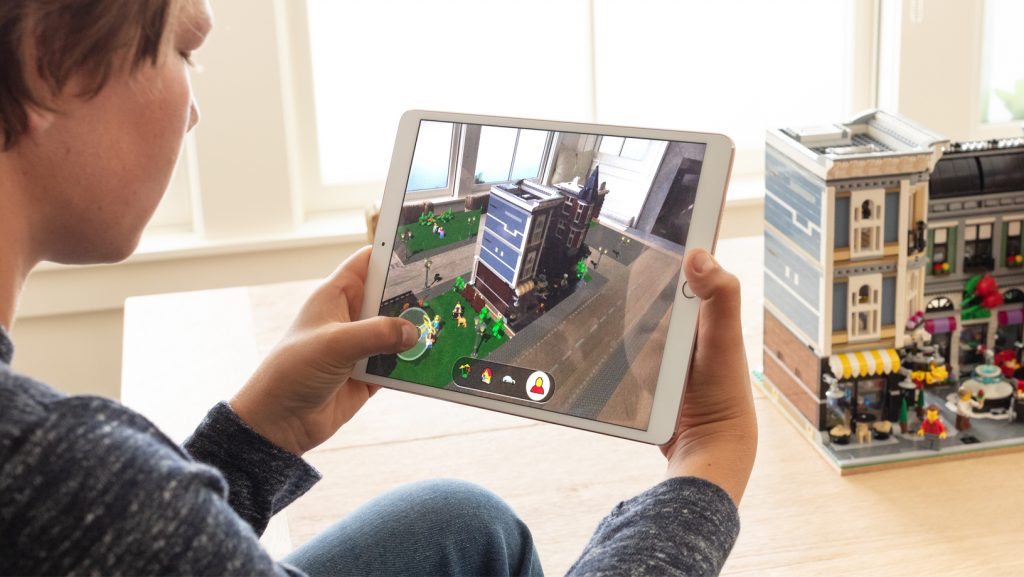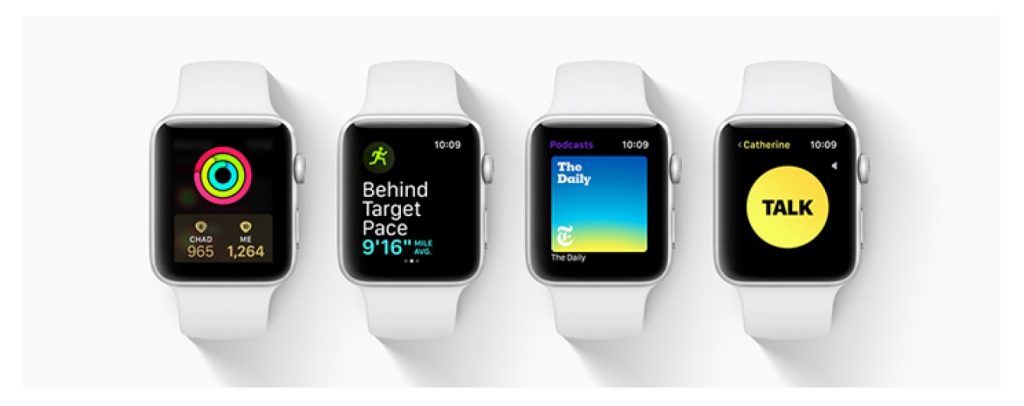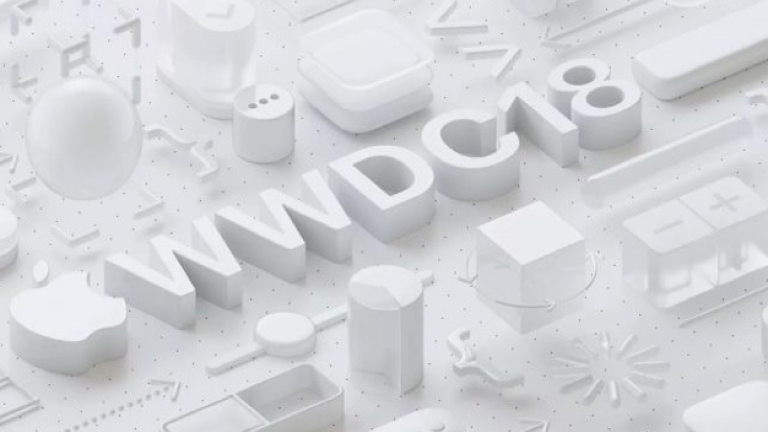WWDC is a much-awaited event not just for the Apple developer community but also for the tech world, business enterprises and tech savvy consumers. There is always some pre-event buzz round WWDC, but this year was marked by relative quiet on the rumor mill. Apple WWDC event kick started on June 4th. In this article we discuss a few critical announcements made and their implications for enterprises.
Contents
iOS 12: focus on performances

Image source: Apple.com
The next version of iOS focuses largely on delivering better performance rather than charming users with newer features. It promises faster app launches, smoother gestures while bringing in some breakthrough features in technologies such as ARKit, Siri and Core ML. iOS 12 maintains backward compatibility too, supporting a lot of the older devices. In fact, every device that runs iOS 11 can run iOS 12. Product parity is common in hardware and revolutionary new features are virtually impossible on that front. Hence the only way to keep the users glued on is to improve the performance of the existing software significantly.
The Implication:
For enterprises it could simply mean improved performance of their apps by getting them ‘iOS 12 ready’. Since adoption rates of latest iOS releases are high thanks to a centralized update system, support for iOS 10 and lower can perhaps be dropped.
Augmented Reality: catalyst for more use cases

Image source: Apple.com
In recent times AR has become a buzzword and a sought-after technology. However, one can’t but help feel that the use-cases baked into apps did not really lend themselves for repeated usage. AR-enabled apps have largely novelty value and hence the benefits of the technology have not been exploited yet. ARKit 2 hopes to change all that with improvements like multi-user support. It means that several users can view the same AR scene from their own device’s perspective. This opens up for a lot of opportunities for game developers and even brands considering bespoke games. With features like persistent and shared AR experiences, Apple is also bringing social element into AR world.
Entirely new experiences could be created using these technologies. For e.g. a group of people can get together every day to build ‘AR worlds’ of their own and persist the AR world between sessions so that they can rebuild from where they left off. Persistent experience could also allow people to engage with AR world for a longer duration.
With 3D object detection one could bring real world objects to the AR world and manipulate them. In a way it is a marriage of the physical world with the virtual world. I wonder if one could save this model into the new USDZ file format for later manipulation using Adobe software. Currently it sounds like it supports known objects such as sculptures, toys and furniture.
The Implication:
Being able to share the same AR world between multiple users will open up a new mode of experience design for Gaming and Education industries. Earlier all engagement had to be done with a single session and hence it was not so appealing to the customers. But now with persistent experience the engagement can be real and hence more people can engage with AR experiences. Two chess players could play a game of chess in AR without an actual chess board during a coffee break and continue the game later on. Aside from games, Augmented Reality could enrich the experience in the content of news apps. An article showcasing a new car model could be accompanied with 3D model of the car or travel related content can showcase a destination or landmark like never before.
Apple also demonstrated that ARKit 2 could reveal the interior of the physical set but may be it can do so only for known structures. If it works in a universal fashion then this could also be used to show the interior of vehicles, engines etc. – a feature that automotive industry or maybe the real estate industry can explore.
Siri gets better

Image source: Apple.com
Siri shortcuts can be a useful feature if used smartly – it looks like any app can add a shortcut to Siri, enabling the app to complete a sequence of events.
Also, it appears that you can combine shortcuts from different apps to create a workflow that will be executed in the specified order as defined during the shortcut creation. With Siri opening up for other apps and support for creating workflows by combining Siri actions from multiple apps this creates a whole new way of automating common use cases that involves multiple apps.
The implication:
Apps with repetitive tasks – e.g. utility payments can make use of such a feature.
The Apple differentiator and privacy

Image source: Apple.com
Not ‘selling’ consumer data and not relying on advertising as a major source of revenue has been a priority for Apple. Apple once again affirmed their position with respect to user’s privacy. They already provide protection for lot of data such as location, contacts, photos, camera, microphone etc. Now they are taking the privacy one step further by blocking software based approaches of identification. With additional confirmation dialogs when browsing in places like when adding comments that requires login to social media they are putting users in control of their privacy. Also techniques like Fingerprinting are also not going to work reliably as their access to algorithms they used to generate will be blocked.
Recently, iPhone’s co-creator and Apple investors also highlighted concerns about growing mobile phone addiction among teens and kids. They had urged Apple to own up the responsibility of controlling phone usage. It looks like Apple heard them and hence the new features like Screen Time and App Limits. These two provide features such as Reports, Summary, Time limits, Allowances to enable better control over yours and your kids’ phone usage.
Ironically, soon after announcing features which enable some sort of discipline to phone usage, Apple announced the addictive Memoji feature. The ability to blend Memojis in FaceTime or messages on top of your face is something that’s fun. I can see people trying this out along with the new camera filters. So I guess wherever there is Camera integration you can get this feature as well.
Core ML 2
Apple’s Machine Learning framework Core ML got a significant upgrade both in terms of speed and model size. With improved performance I think app developers might now be able to integrate Core ML in their apps since it does not bloat app sizes. Create ML tool brings machine learning training and modelling to the Mac. With native support on the Mac, Create ML can significantly improve training times for custom models. With Core ML 2 if the app developers see a significant drop in the model size, then I think people might experiment with it and start integrating it in their apps.
WatchOS 5

Image source: Apple.com
Although targeted at sports and fitness enthusiasts, Apple Watch is soon proving to be a lifesaver device and not just a fitness tracking device. Of late the device is strongly linked as a health monitor and even a life saver
WatchOS 5 is adding a Competition feature using which you can challenge your friend for a fitness activity and monitor the progress. Better tracking of your activity such as workout alerts allows you to track your activities more accurately. Walkie Talkie feature is a cool feature that enables watch-to-watch connection, which when established, allows you to walkie-talkie each other. And this works over Cellular and WiFi, making it very usable. It could be a replacement for quick chats.
WatchOS 5 allows you to view web content on the Watch. This is cool because you now can reuse some of your content as is without having to create native version of the content for the Watch. Does this mean a new form of responsive web pages that supports Watches? Replacement for Student ID cards is another cool new feature that WatchOS 5 brings to you using which you can add your ID to the Wallet and use it in places where a student ID card would be accepted.
Summary
At the beginning of the Keynote, Apple reiterated their commitment to put the ‘customer at the center of the experience’. The slew of new features seem to live up to the promise – aimed at better app performance with emphasis on privacy and safety.





